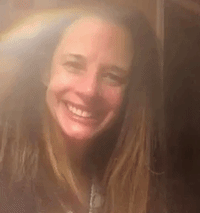Stopping THAT Behavior…
As overworked professionals here are common pleas:
“How do I make this behavior stop?”
“How do you stop this behavior?”
“How do you get him/her to stop this behavior?”
And that’s where things can get uncomfortable.
There’s no magic behavior pill.
To change a behavior, it’s not about changing the behavior itself. “Wait a minute?” you might be thinking.
“What does that even mean? Of COURSE it’s about the behavior!!”
Well...it is and it isn’t...
The trick to change a behavior, is start focusing on what you do BEFORE and AFTER.
The work of behavior change falls to the teachers, not the student.
This can be hard to hear as a teacher.
It generally means MORE work for the teacher, not less…. especially in the beginning.
It’s common for behavior change programs to focus on the AFTER (the consequence) piece.
These are sometimes termed “B-C” programs, or Behavior-Consequence programs.
Consequence systems often include, ignoring a behavior, or prompting a different response.
Recommendations may include using a token board or using other reward systems.
These can be effective and can lead to HUGE and POSITIVE changes for one child.
It’s amazing to be part of a child-specific process and this is a very, very important part of the work we do.
ABA (Part One)
Still, there’s a different way.
It’s All About Antecedent Teaching
Antecedent Teaching. This approach changes the focus and has the teacher consider what could go wrong BEFORE it does.
And making changes to how you set up your lessons, your teaching, your rules, and systems.
It calls for the teacher to start thinking about how to predict and teach certain skills before challenging BEHAVIORS to occur.
As a BCBA my preference is to use A-B programs whenever possible.
They empower the teachers, and the student, to begin recognizing strategies that work for them.
They help create a common vocabulary across the adults and children.
This builds consistency of approach as well as added comfort when the unexpected happens...
i.e. “ummmm… so THAT just happened… what do I do now?”.
A-B systems are also easy to put in place.
They are not stigmatizing for children who are struggling since they interventions are being applied to ALL students.
A-B systems encourage kids helping kids.
And they transfer to new environments without a lot of specific support.
Know Your ABC’s...
A is for Antecedent.
These are the conditions that happen BEFORE a behavior of interest occurs.
Antecedents can include everything from:
Time of day, day of week, season, etc.
Environmental factors: seasons, weather, noises, lighting, temperature
Instructional signals: academic demands, transitions, completing a locker routine or being directed to complete a homework assignment, etc.
Common antecedents found in schools might include:
-
The teacher directs students to start or stop working
-
A peer asks another peer to borrow a pencil
-
The announcement calls with an expected notice that recess will be INSIDE today
-
The bell calls for students to go to their locker to prepare for the end of the day
-
There’s a substitute teacher for the day
-
A child has a headache or a slight fever (and may or may not be medicated to start the day… sound familiar??)
-
A student has received bad news about their family
-
It’s the Friday before vacation
-
It’s Wednesday which means Art class
-
The gym is loud and unstructured with lots of equipment moving around
Some antecedents happen AROUND a student and some antecedents happen TO a student.
When an event (antecedent) connects with certain consequences AND those consequences are somehow functionally motivating (or reinforcing) to a student... those antecedents can set the occasion for that behavior to happen MORE often.
But if the consequences are somehow punishing (in ABA, a punishment means that something has led to FEWER displays of behavior). Then those antecedents can set the occasion for that behavior to happen LESS often!
As teachers we can plan for some antecedents to occur or not but, some are out of our control!
We can change when and how we lead a language lesson, but we don’t have much control over the weather!
B is for Behavior
This is the observable, measurable thing that we are looking to change.
Behaviors can be academic or social or active or passive or physical or verbal.
If we can observe it and measure it that means we can define it and, with careful planning, change it!
“Behavior” is most often thought of as: hitting, throwing things, work refusal, that kind of thing...
Yet, behaviors include many of the observable events that happen every day, including:
C is for Consequence
These are the events that happen AFTER a behavior of interest occurs.
If the consequence is somehow reinforcing, that behavior may happen more often under similar circumstances.
Examples of applied consequences include:
-
Verbal praise, i.e. “good job!”
-
Physical praise, i.e. high fives or fist bumps
-
Good grades
-
Happy and full belly (after eating something)
-
Laughing
-
Engaging in more game play
-
Adult attention/support
-
Peer attention/friendships
Here’s a common example of consequences serving as reinforcers in school.
The teacher asks a question (antecedent) and the student raises her hand (behavior) and the teacher calls on her (consequence).
If being called on is a motivator, the student is more likely to raise their hand in the future.
Consequences might mean stimuli being removed instead of applied.
If the removal of stimuli is somehow reinforcing, then the behavior may again happen more under similar circumstances.
-
Being given a homework pass when you hand in your homework on time for x number of days
-
Removal of discomfort after repositioning in your chair
-
The teacher moves onto someone else after student responds, "I don't know."
A common example of this kind of consequence involves bug bites.
If you get a mosquito bite (antecedent) and that bite starts to itch and you scratch it (behavior) the itchy feeling is reduced (consequence).
We are reinforced by this newfound absence of the itchy feeling and so when the itch happens again we are more likely to scratch it because scratching it in the past led to positive outcomes.
Different Perspectives
But guess what?? As teachers we are as involved in our own personal A-B-C continuums!
This is one of the reasons why behavior change can be so hard for our students…
Because our responses as teachers can be so reinforcing that it’s hard for us to change!!
Let me give you one example.
We’ll start from the student’s perspective on a common problem:
Student Antecedent: Teacher delivers math instruction (student’s least preferred subject!)
Student Behavior: Student engages in disruptive behavior
Student Consequence: Student is sent out of the room to visit the principal
If being sent out of the room is more motivating than completing a math assignment then the child may be more likely to display disruptive behavior in math class.
OK, you might say, makes sense.
So why do we as teachers so often fall into similar traps?
Let’s look at the same event from the teacher’s experience.
Teacher Antecedent: Teacher witnesses disruptive behavior
Teacher Behavior: Teacher sends source of disruption out of the room
Teacher Consequence: Teacher continues to deliver her lesson without further interruption
If being able to deliver your lesson without dealing with disruptive behavior is reinforcing to you, guess which behavior you are more likely to choose in a similar situation in the future?
We are often completely unaware that we are responding as part of a behavioral continuum.
Once we become aware, it’s common to feel guilty or even embarrassed.
We’re doing our best as teachers and when we know better, we do better.
Until Next Time...
In this post I stressed my preference for using Antecedent Teaching whenever possible and this post hopefully makes the case for adding some AT approaches to your room now instead of waiting for your child to develop behavioral habits that necessitate the one child-one system approach of Behavior-Consequence systems.
Antecedent Teaching removes the messy layer of comorbid A-B-C continuums happening between and among student and teacher systems.
I’m excited to start exploring Antecedent Teaching systems, starting with 5 Ways To Promote Better Time Management, next time!


Meet the Guest Author:
BCBA Shauna Jean
Shauna Jean, M.S. Ed., BCBA, L-ABA is a Behavior Consultant, an Integrated Preschool Teacher, and a Yoga Teacher in the Metro-West area of Massachusetts. She has worked in the field of special education since 1993. When not in her classroom, she can be found in her private practice supporting children and their families with behavior and social skills, self-direction and leisure as well as collaborating with community-based groups, or teaching graduate courses for teachers, or leading vinyasa and yin yoga classes for adults in need of some “ommmm”. For questions or comments, she can be reached at shaunajeanbcba@gmail.com.






